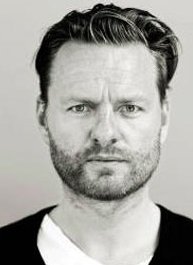
Muslumovo : a village in the shadow of the nuclear bomb
Nicolaï Fuglsig
Rapho
WINNER OF THE 1999 KODAK YOUNG PHOTOGRAPHER’S AWARD
For the 2.500 people of Muslomovo in the southeast Urals, the river that sweeps calmly through their village is part of the flow of life. But the river is not the benevolent river of life it seems. For nearly 50 years its stream has borne a deadly load of radioactivity, and today the concentration of such isotopes as Strontium 90 and Cesium 137 is so high that in places it exceeds the natural background radiation by 50 times.
Preview
The river rises significantly to the north of Muslumovo ˆ close to the Mayak Chemical Combine that is the source of the village's troubles. The factory was set up in 1945 to produce plutonium for the first Soviet nuclear bomb, in a race against time and the United States. Bad judgement and technical problems made Mayak one of the largest environmental disasters in history. From 1949 to 1956, to avoid the problem of storage, the factory discharged 76 million cubic meters of liquid radioactive waste into the river.
Between 1953 and 1960 six villages along the Techa were evacuated and burnt to the ground. The only village not evacuated was Muslomovo ˆthough it is closer to Mayak than several of those which were. Local people now suspect they were used as guinea pigs in a bizarre experiment on the effects of radioactive pollution. The authorities deny this, but no one can explain why Muslumovo was the only village left undisturbed.
Although a joint Norwegian-Russian report in October 1997 shows the water itself is no longer radioactive, the pollution has sedimented in the riverbed, meadows, fields and vegetation. The oldest citizens remember when the village had only two cemeteries, one Christian and one Muslim. Today the village administration is looking to place for the seventh graveyard.
In early April 1998 Danish photojournalist Nicolai Fuglsig and journalist Mads Lindberg went to Russia to meet the people of Muslumovo in the Chelyabinsk region in Russia. The two young Danes discovered a grim and horrifying story that deserved to be told with the outmost respect for the people that had been exposed to severe nuclear pollution - and kept in the dark for almost half a century.
Mads Lindberg
